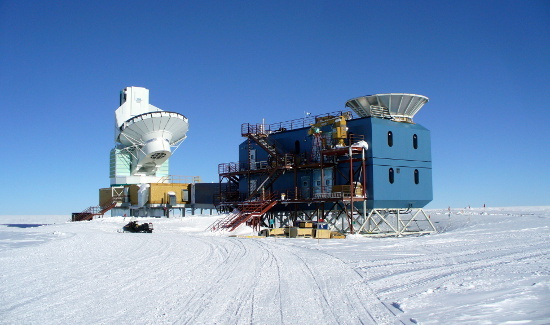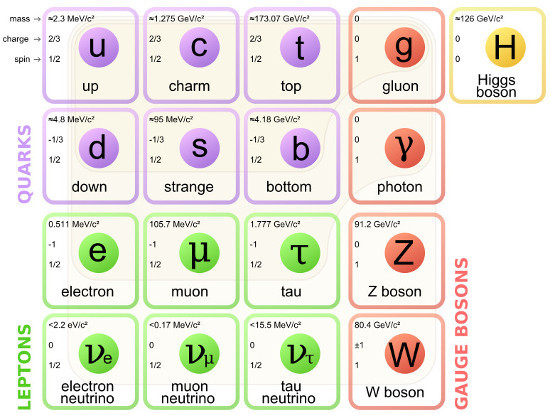The recent potential detection of ripples from the Big Bang by the BICEP2 telescope (Fig. 1) has justifiably generated huge excitement. If confirmed, the ripples represent an imprint on the cosmic microwave background by gravitational waves. Those gravitational waves are produced through a quantum process, providing, for the first time (again, if confirmed), evidence that gravity is governed by quantum mechanics. This point cannot be overemphasized. For decades the key goal of fundamental physics has been to unify the theory that works so well on the universe's largest scales -- Einstein's theory of general relativity -- with the theory of the subatomic world -- quantum mechanics. The BICEP2 results do not point the way to what that unified theory might be, but they provide evidence for the fact that general relativity and quantum mechanics can be made compatible.
Figure 1. The BICEP2 telescope (on the right) at the south pole. On the left is the South Pole Telescope. (Image in the public domain.)
In recent years physicists have taken a few encouraging steps toward a potential theory of quantum gravity. In particular, UCLA physicist Zvi Bern and his collaborators have revived from the dead a theory known as supergravity, which assumes that in addition to the gravitons -- the presumed quantum carriers of the gravitational force -- other mirror particles exist as well. While Bern does not suggest that supergravity is the ultimate theory, he hopes that it may at least provide the skeleton for a more complete theory.
One of the main problems in attempting to calculate gravitational interactions with gravitons has been that the calculations produced unphysical infinities at almost every step. The way particle physicists go about calculating the results of interactions is by summing up all the probabilities for all the possible processes. Originally, these labor-intensive efforts were believed to lead to values that simply blow up. Bern and colleagues, however, managed to enormously simplify the calculations by showing that, at least in some cases, gravitons can be replaced by two copies of gluons -- the carriers of the strong nuclear force. (Fig. 2 shows the "standard model" of particle physics and the place of gluons within it.) If this double-copy-of-gluons relationship holds in general, this clue could potentially lead to a dramatic breakthrough in the search for a quantum theory of gravity. The important point is that physicists already have at their disposal a fairly successful theory -- quantum chromodynamics -- to describe the interactions of gluons. The jury is still out on whether Bern's shortcuts and the idea of supergravity work in more complex calculations, and, more importantly, whether they truly apply to the real physical world, but one is beginning to sense a certain level of optimism.
Figure 2. The standard model of elementary particles. The gluons are the carriers of the strong nuclear force. (Figure in the public domain.)
One piece of the puzzle that, at the moment, appears difficult to crack is how to deal with black holes -- those singularities in classical general relativity that manifestly represent a breakdown of the theory on the quantum scales. In the next blog post I shall discuss an exciting new development in that realm.

